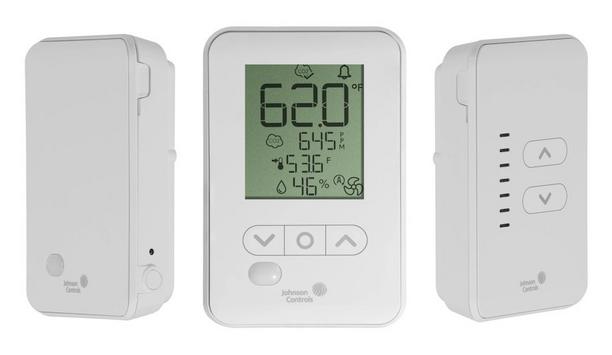Panasonic Corporation announces that it has marked the 30th anniversary of its 200 V IH cooking heater business in 2020 after launching the mass production of the 200 V built-in induction hob (KZ-DHC31) in September 1990, an industry first.
The cumulative production quantity exceeded seven million units in November. Panasonic's IH cooking heater business originated from the launch of the Cool Top Wagon (KZ-1W) IH cooking heater in 1974. It was the first product in Japan to adopt the high-frequency method.
Precise temperature adjustments
Since then, the company has been promoting the research and development of IH technologies to be applied to several products, which led to the creation of new product categories to which IH technologies were applied. The new categories include the Joy Cook tabletop IH cooking heater (KZ-1000T) launched in 1978.
Another example is the IH Rice Cooker/Warmer (SR-IH18) launched in 1988, which was the world's first product developed by focusing on the performance of IH capable of precise temperature adjustments through frequency control to reproduce the fine heat control achieved by Kamado cooking. The company has always led the industry.
Low radiant heat
Comfortable without increasing ambient temperature due to low radiant heat
IH is an initialism of Induction Heating. It uses a mechanism whereby electric current is generated when lines of magnetic force generated by the electromagnetic coil installed in an IH cooker pass through the bottom of the pan to be heated, with the pan itself generating heat due to electric resistance when the current flows through its bottom.
Therefore, IH cookers have the following features:
- Very safe without using open fires
- Easy to maintain due to the flat top plate
- High heat efficiency of approx. 90% and energy conservation achieved by heat generated by the pan itself
- Comfortable without increasing ambient temperature due to low radiant heat
- Suitable for household environments without generating CO2 or water vapor when used
Cooking temperature constant
The 200 V induction hob was developed by making the most of these features, achieving high heating power by simply using a 200 V household power source, normally stepped down to 100 V for distribution. The product eliminated customer concerns that ‘it may be unsuitable for full-scale cooking due to lower heating power compared to gas cooking stoves that produce flames.’
In 1990, Panasonic launched the industry's first 200 V induction hob equipped with two IH heaters, a radiant heater, roaster, temperature sensors for keeping the cooking temperature constant, and a timer function for preparing simmered dishes. Subsequently, the company tried to overcome the technological barrier whereby ‘aluminum pans could not be used for cooking with induction hobs.’
Expansion of induction hobs
Power losses were successfully reduced to a minimum by applying higher frequencies to the electromagnetic coil
Power losses were successfully reduced to a minimum by applying higher frequencies to the electromagnetic coil and thinning its constituent copper wires to be coiled in a twisted manner. In 2002, Panasonic launched the induction hob (KZ-321MS), which was the world's first product compatible with all metal heating, including aluminum pans, multilayer stainless steel pans, and copper pans, all of which could not be previously used for induction hobs.
This supported the spread and expansion of induction hobs. The company has been pursuing the improvement of cooking methods and usability only made possible by IH technologies, in addition to the evolution of the basic functions of such products.
Conventional induction hobs
Their flat cooktops provided ease of cleaning and an excellent design, whereas the company received some customer feedback stating that it was difficult to identify whether the left or right heater was in use.
The induction hob (KZ-321G) launched in 2000 solved this issue by incorporating red LEDs in a circle configuration around each heater and lighting them up when each heater is turned on. This ‘Luminous circle’ was highly valued by customers and has subsequently become a feature of induction hobs manufactured by Panasonic. After their initial launch, conventional induction hobs were equipped with temperature sensors for measuring the temperature of pans.
Optical heat sensors
This challenge was solved by temperature measurement technology using infrared sensors
However, each sensor measured the temperature of the heat that traveled from the bottom of a pan to the cooktop, generating a time lag between the actual pan temperature and measured temperature, thereby creating the need for designing products by suppressing high heating power from a safety perspective.
This challenge was solved by temperature measurement technology using infrared sensors. In 2007, Panasonic launched the induction hob (KZ-VSW33D) equipped with infrared ray-based ‘optical heat sensors’ that allowed the real-time measurement of the temperature of a pan by directly measuring infrared rays emitted from the bottom of the pan. This enabled stable high-temperature cooking by preventing a drop in pan temperature even when the pan is shaken during cooking.
Automatic cooking menu
Moreover, in recent years, even overseas customers have highly valued Panasonic's induction hobs with a fine temperature control function applicable to diverse elements of the Japanese food culture, which require precise temperature control as the key to cooking dishes such as tempura.
Panasonic will continue to evolve induction hobs as cooking appliances that make effective use of the features of IH technologies by enriching functions for improving usability, including additional automatic cooking menu options and a grilling assistant, thereby supporting the richer eating habits of customers.















